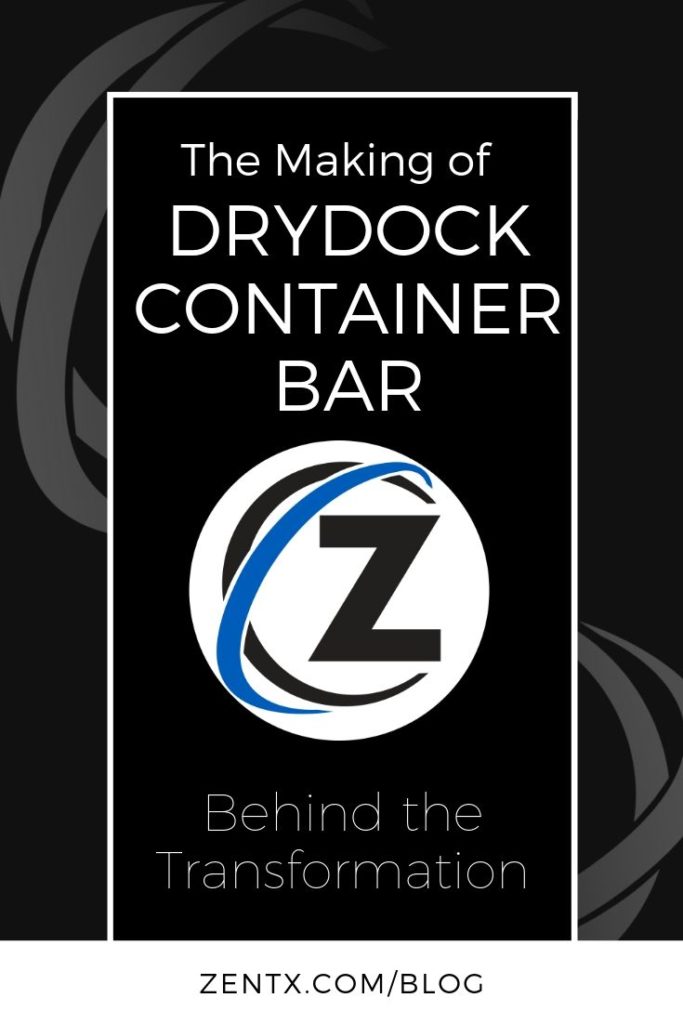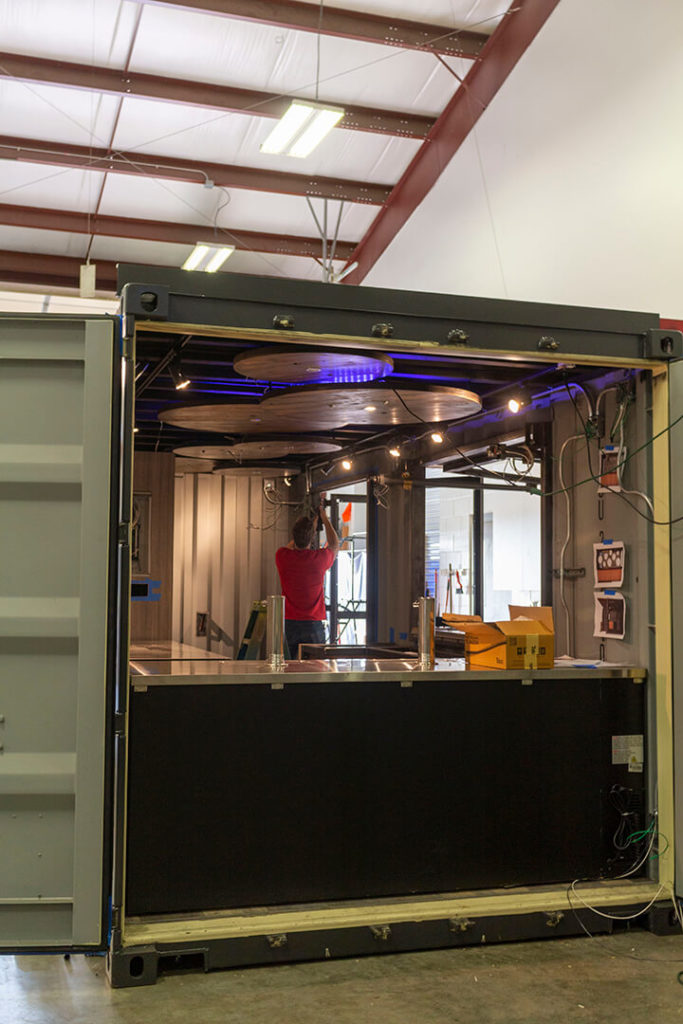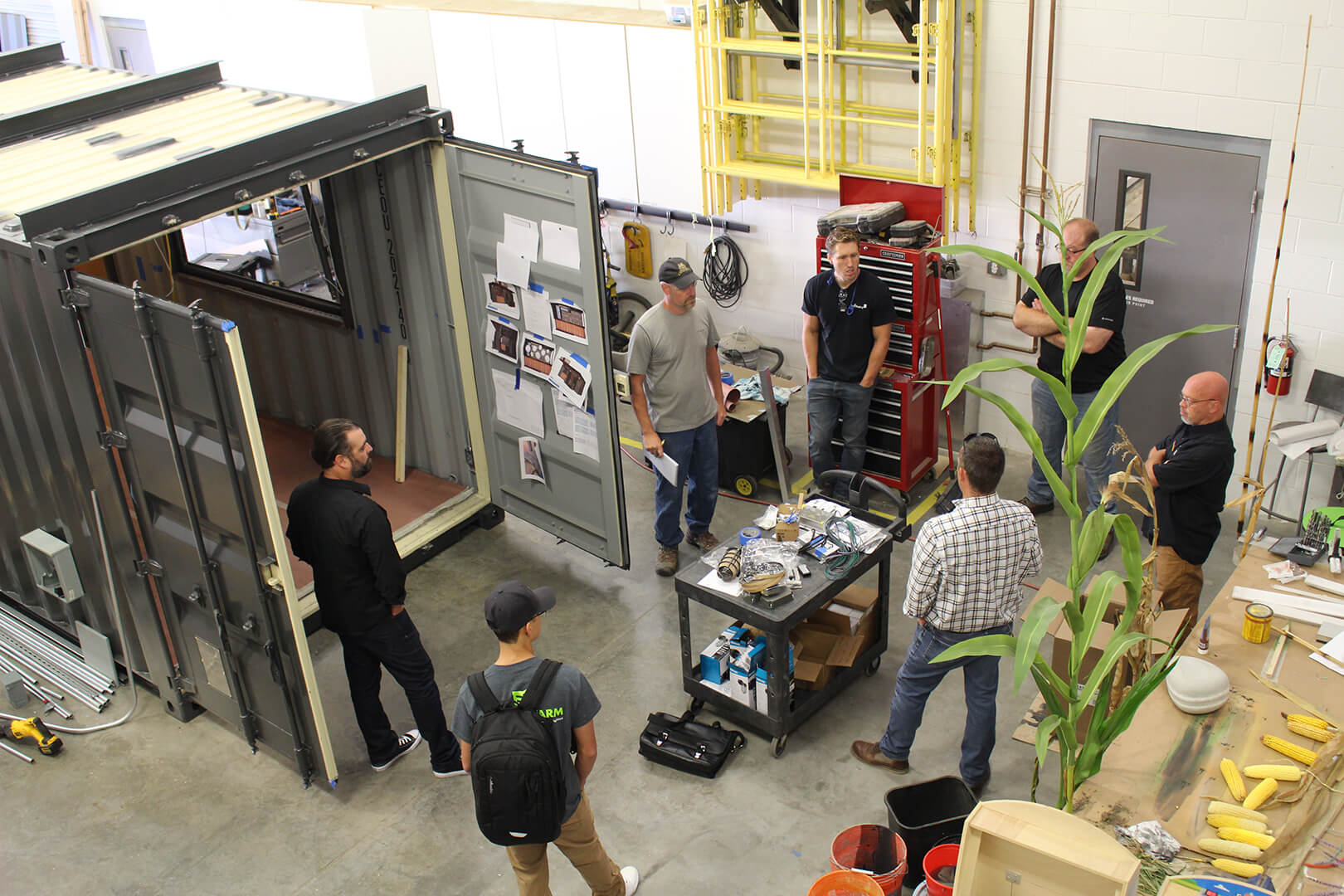
The “trouble” (if you can call it trouble) with a really cool project like a container bar is that there’s way more to talk about than any three-minute video could show. One of those things is the fabrication process.
For almost six weeks, we had a shipping container in the back of our building undergoing its metamorphosis into a container bar. There was a lot to design, a lot to create, and a lot of steps to keep track of. Which means we wound up with a lot of work-in-progress photos and videos, but a limited amount of video time to spend sharing them.
Since we could only include a little bit of the process in the Transformation Story about Drydock, we’ve put together another video to show more of the hard work and skill that went into making it. From early designs to welding to painting to installing, it’s all here.
Check out the video below (or on our YouTube channel). Further down this page, you’ll find an explanation of the steps the video shows.
First Steps

So technically, building Drydock didn’t start with that fancy 3D concept drawing. It started with creating the drawing. The only design guidelines we got were “industrial style,” which doesn’t specify much about the details. Fortunately, our designers are pretty creative, and they came up with a standout combo of weathered wood, distressed metal, and red trim. Applying that concept to the beige shipping container we had to work with was the next challenge.
Step #2: slicing holes out of the side for the doors. We cut another big hole for the bar counter, so customers can walk right up to get their drinks. On a warm summer evening, who wants to be inside even for a minute?
Once the basic shape of the outside was finished, the painting could begin. You saw a timelapse version in the video, but the actual time it took to cover the whole container was more like an hour. (Longer, if you count the time it took to tape over the doors, move the container to our parking lot, and get everyone to move their cars upwind.) It was a lot easier to picture the final result once the container was iron gray rather than plain beige.
Putting the Creative Engine to Work

Pretty soon, the workshop guys were welding metal for the door and window frames. Nothing says “industrial” like some carefully-scuffed metal, after all. Then it was time to start wiring the interior for electricity, so the bartenders can keep the drinks chilling and the music playing.
We also started on some custom lights. Our craftsmen took circular pieces of wood and worked a little magic to make them look older. They attached some lights, then programmed them to cycle through an array of colors. Pretty much every color of the rainbow, in fact. And presto: unique and eye-catching lighting.
By now, things were getting close to completion. Cooler cases and countertops were installed. Meanwhile, the final finishing touches — chalkboards, ADA-compliant ramp, whiskey barrels repurposed for decoration — got designed, distressed if need be, and installed. One of our designers came up with the bar’s simple, sturdy logo.
Bringing it Home
And then the install day rolled around. With some help from folks with a flatbed truck and folks with a crane, we took the bar from 8853 West Freeland Road to 115 Center Avenue in Bay City. It took some maneuvering to squeeze the bar into the comparatively-narrow micro-park that’s now its home. But we made it work and got everything moved in with nary a scratch to the bar or the buildings.
And finally, a week later, the entire ZENTX team trooped down to Bay City to enjoy Drydock’s soft opening party. As far as fun ways to finish a project go, hanging out at a bar has to be right up there. And it’s even more fun when you can simultaneously watch other people enjoying the project you’ve been working on.
Want to hear more about this project? We interviewed Alan LaFave, Bruce Falcon, and Mike Bacigalupo, the clients who commissioned Drydock, to find out how Drydock benefits their nonprofits and what they thought of the results.
